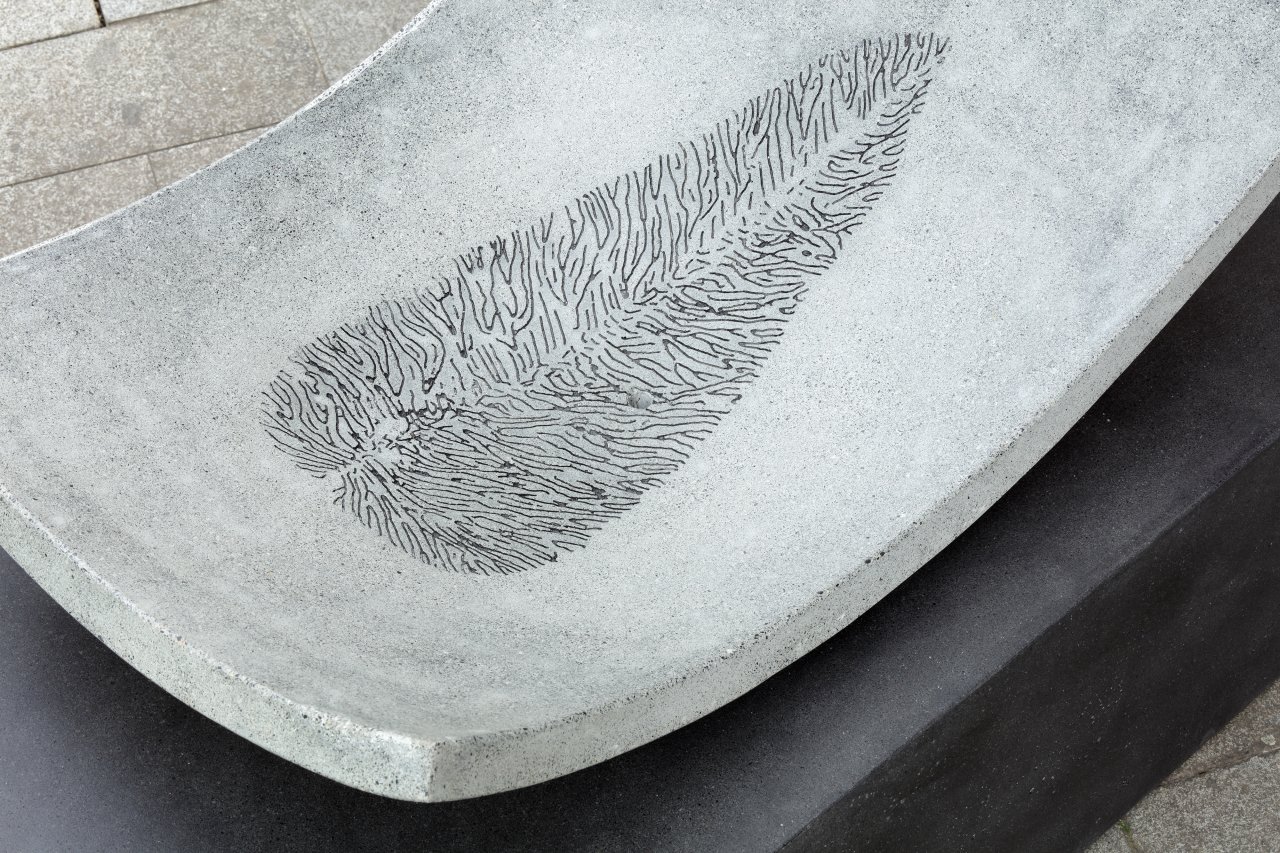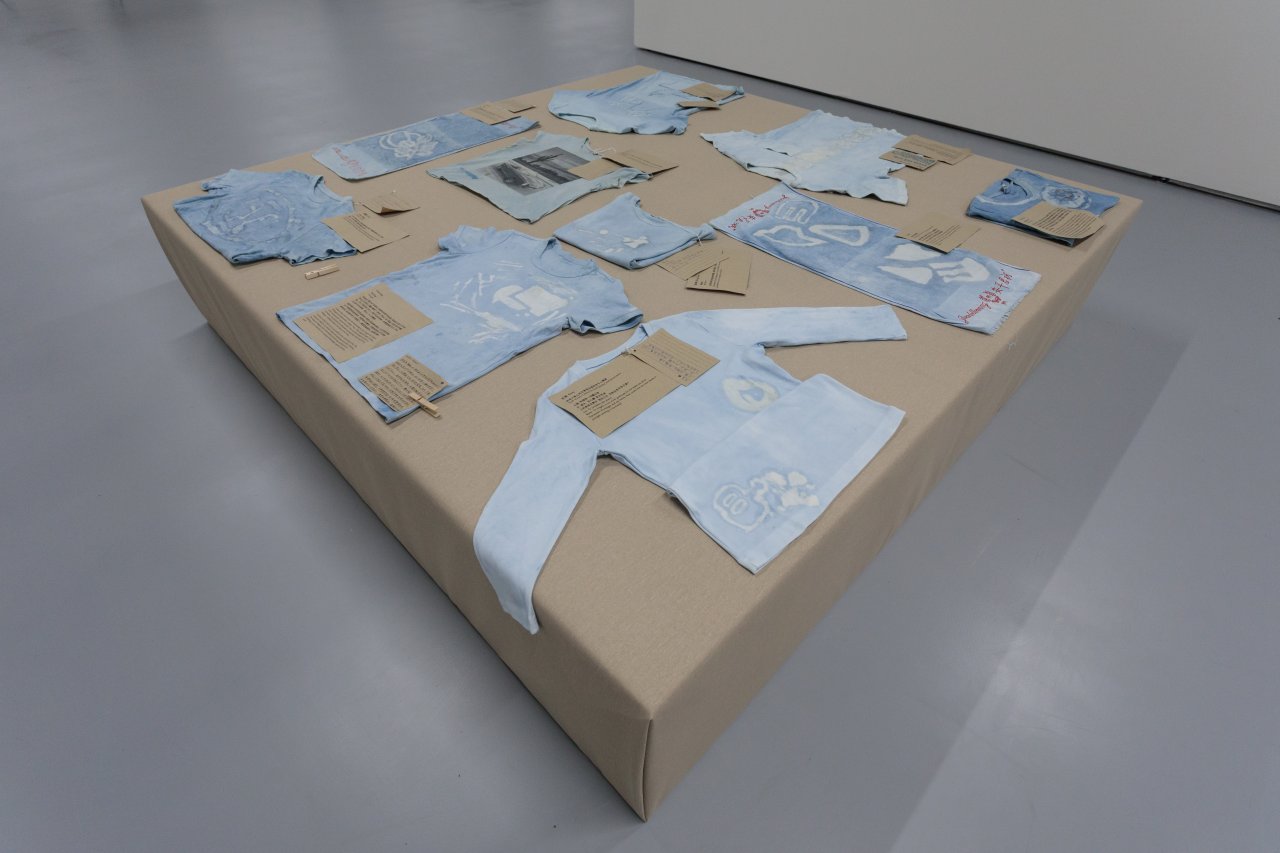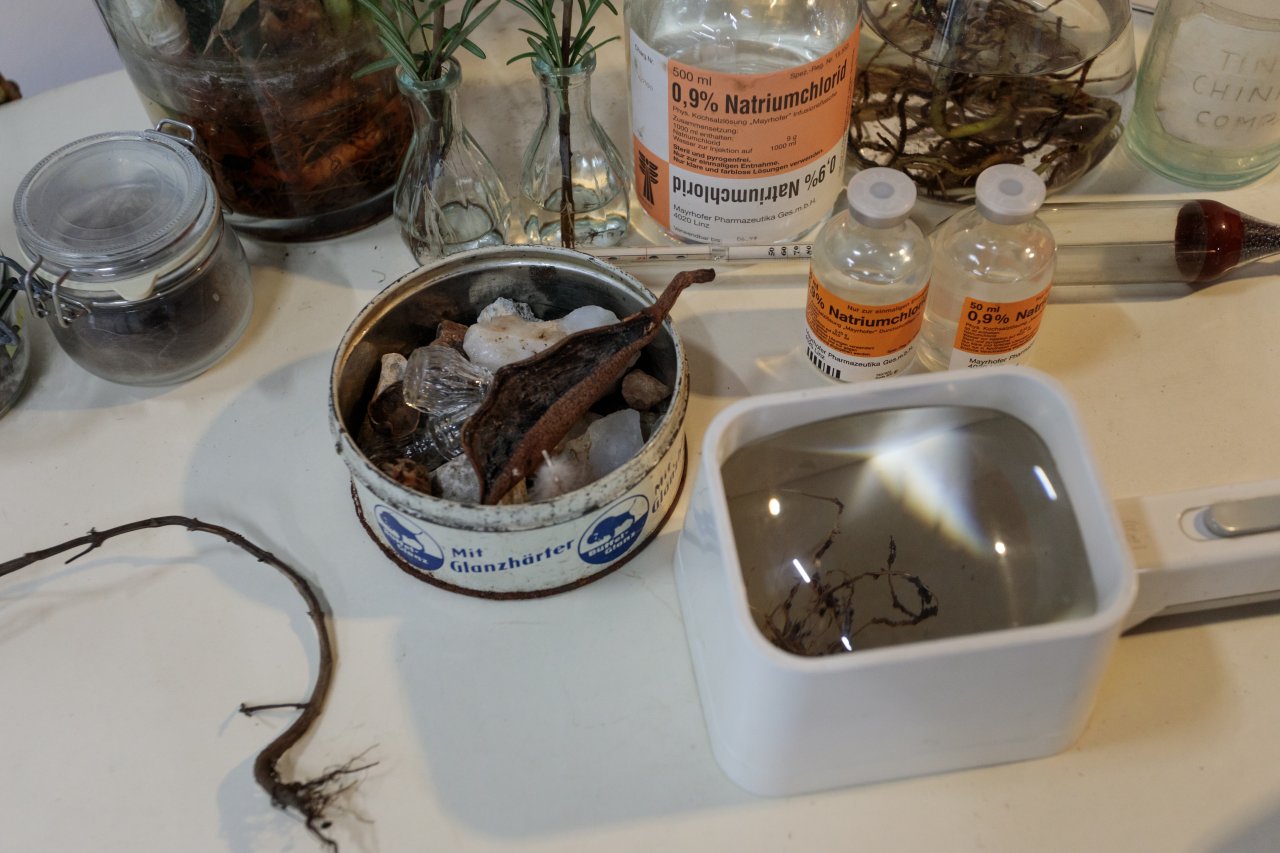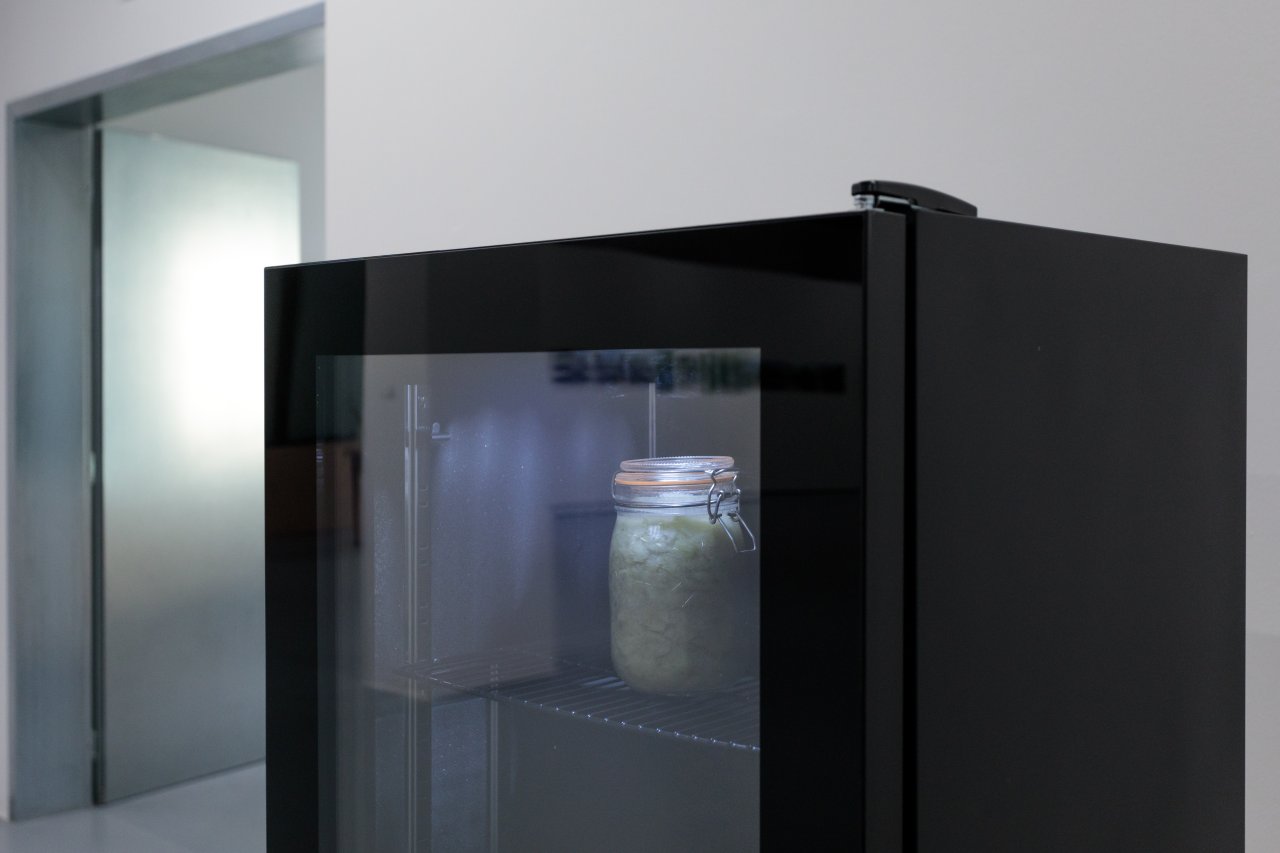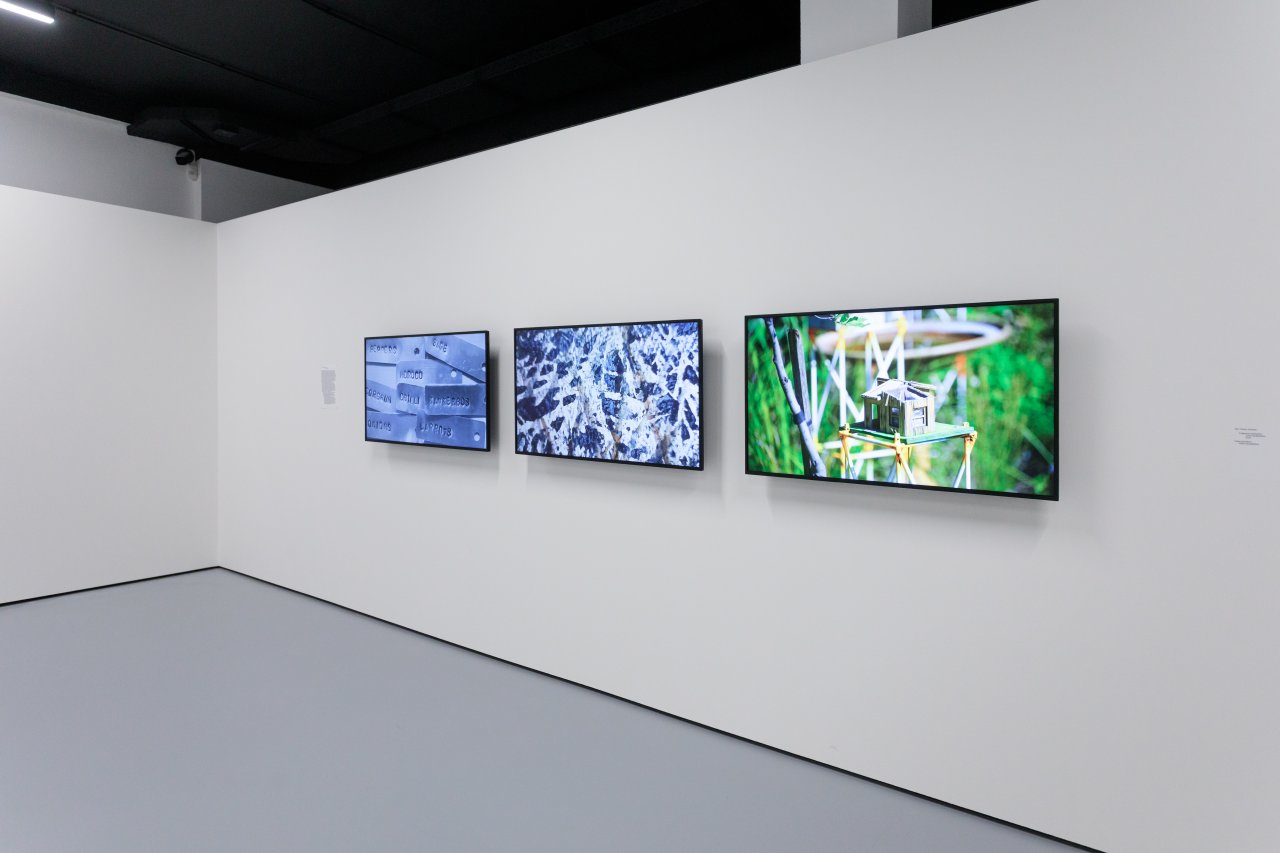GARDENING OF SOUL
Ústí nad Labem House of Arts
7. 12. 2023 – 9. 4. 2024
The exhibition Gardening of Soul at the Ústí nad Labem House of Arts is part of a long-term pro-gram called Gardening of Soul: In Five Chapters, which examines the topic of the garden and gardening from various metaphorical angles. Undertaken at the Faculty of Art and Design at Jan Evangelista Purkyně University in Ústí nad Labem, this multiyear program is divided into several interconnected parts and encompasses the creation of artworks in the public space with involvement from local communities, residencies of foreign artists in the Czech Republic and Czech artists in Iceland, an international conference, and exhibition presentations accompanied by the realization of current works of art. In the context of the aforesaid program, the exhibition Gardening of Soul can be seen as an important crossroads, as it offers a wide range of results that have gradually arisen through out the course of the program and reflect its thematic focus in individual artistic expression.
The garden is a place where a person – a gardener – realizes his own vision of nature, which they co-create and feel a part of. There are many reasons we so often retreat to the garden, and they change in different social and geographical contexts. Of course, one of the key motivations for such behaviour stems from a need to flee the chaos of the world, which attacks us and leaves us unsettled and hurt. In the midst of the garden, everyone is largely alone, surrounded by an order that transcends them and is not entirely in their power. The diligent work of producing beauty (and occasionally food too) is, after all, a cleansing process closely tied to the realization that nature exists and develops autonomously despite our will and desire to impose our understanding of the world on it. Therefore, each planted shrub, each tilled bed, each fruit brought successfully to ripeness is part of a dialogue between the gardener and the laws of the natural framework in which it is a fixed component. The social and, of course, also the cultural significance of the garden is undoubtedly linked to this rootedness of mankind in environmental contexts, in a dichotomy of arrogance and domination or, on the contrary, in an understanding and adaptability to the natural order that defines the boundaries of our existence.
In the context of modern history, the city of Ústí nad Labem and its greater surroundings (particularly the deep and fuming furrow of the North Bohemian Lignite Basin) are one of the examples referencing the destructive development of an authentic natural environment under the influence of extensive, long-term industrialization. The local landscape, unique in many ways and imbued with a romantic beauty, was (and in some preserved localities still is) a model of a healthy symbiosis between the development of natural potential and the cultural influence of humankind. On 2 September 1860, Božena Němcová’s son Karel wrote the following words in a letter to his mother during his service at Jezeří Castle: “It is true that this here is the most beautiful landscape in Bohemia; for the most part, the park comprises a cut-back forest with several stunning vistas of the surrounding areas.” He was likely referring to views of the valley, which at the time still held remnants of Lake Komořany and today is the site of one of the largest lignite surface mines – the depleted Quarry of the Czechoslovak Army, surrounded by a vast post-industrial, man-raped landscape.
The current turning point, a gradual and irreversible slowing of the extensive abuses committed against the natural environment, is one of the important motives shaping the issue of humankind’s stewardship of the landscape, or, in a narrower sense of the word, the garden, which is a reflection of our ambitions and feelings. How, after such a long period of devastation, to return to awe and desire for “gorgeous vistas”? How do we once again feel the importance of establishing a balance between our needs and a genuine reverence for nature and the resources it offers? As we seek answers to these questions and attempt to chart the course that this turning point will continue to follow, perhaps we can draw inspiration from the thinking of contemporary artists who have an interest in exploring various meanings associated with the theme of the garden as a place filled with care, responsibility, and also happiness from the progress that has been achieved respecting the natural framework of the environment in which they move. Art, with its radicality of freedom in creative expression and unrestrained human imagination, often allows us to view everyday reality burdened by aspects of the rational functioning of society from perspectives that give rise not only to surprising connections but also to innovative and universally beneficial solutions. The creative process springing forth from the relationship with the conventual fundament of artistic expression as well as with the audience and, frequently, also with the participating community, which in various forms may comprise one of its components, presents an invaluable source of knowledge and an understanding of contexts aimed at changing seemingly unshakable and (in many ways) determinative stereotypical social norms and systems.
All the while, the garden in the context of the exhibition Gardening of Soul is understood in several intertwining symbolic, metaphorical, technological or, conversely, wholly specific levels. Some of the projects presented in the exhibition focus on an understanding of the garden as an image that allows us to see concerns about ongoing environmental developments, which seem to be careening uncontrollably towards a state of irreversible damage to the fragile balance between the needs of humanity and the possibilities of our planet to secure them in the ongoing extensive and expansive mode. Other projects ponder the existential dimension of the garden as represented by alternative cultural tools, drawing attention to the universal significance of this phenomenon as it transforms under the influence of new technologies, civilizational influences, virtualization, and artificial intelligence. Others yet open perspectives on understanding community togetherness as an ecosystem, the potential of which needs to be permanently oxygenated in order to foster new perspectives of mutual respect, listening, and acceptance, or they notice very specific examples of crisis and a disruption of necessary ties to a landscape, to a place, to a community resulting in the uprooting and loss of connections essential to understanding oneself and others. Last but not least, the exhibition presents projects offering closeness in the form of collaboration on a joint work, which constitutes a space for opening up, tolerance, and reconciliation with an otherness perceived as natural wealth, or those striving to cultivate and strengthen the meaning of a specific place and allowing it to be newly embraced by the community.
The works presented to the public in the exhibition Gardening of Soul can be divided into three groups according to the process of their creation, one of which is born from a lasting collaboration with foreign artists Olia Fedorova (UA), Barbara Herold & Florian Huth (DE), Stephen Hobbs & Marcus Neustetter (ZA/AT), Man Tin (HKG), Finnbogi Pétursson (IS), Andrea Resner (CRO), and Wong Wo Bik (HKG), all of whom recently completed residencies at the Ústí nad Labem House of Arts, which were conceived so that the artists could combine their own interest in the subject of gardening with the specific realia of the local post-industrial setting. In addition, the exhibition features Czech artists Michaela Labudová and Jan Krtička, who had an opportunity to explore eastern Iceland during a residency at the Skaftfell Art Center in the town of Seyðisfjörður, an experience they drew upon in the creation of their works. Last but not least, Jiří Černický, Jiří Bartoš & Jan C. Löbl, Jiří Philippe Janda & Václav Mach, Zdena Kolečková, Jiří Kovanda & Ivana Lovětínská, and Robert Vlasák will, by means of documentation and smaller installations, reveal projects being prepared for the public space in collaboration with the organizations People in Need Předlice, Dobrovolnické centrum Ústí nad Labem and its Culture Club, the senior centre Domov Velké Březno, the Elementary School of Art in Most, and the Jan Evangelista Purkyně University in Ústí nad Labem.
Thus, Gardening of Soul presents the garden as an image of the spread of our individual or, on the contrary, collective community soul, developed through an effort to nurture, cultivate, stimulate growth, initiate, and stabilize relationships and breathe life into new ecosystems, mycelium, and critical symbioses from which a new sustainable future can emerge. The projects presented in this exhibition are united by the artists’ interest in seeking out the lost balance between the individual and the natural or social environment surrounding him. It is a search which, much like tending a garden, requires patient participation, understanding, and engagement on the part of the gardener, whose daily physical toil reflects the concept of environmental responsibility – from germination of the seed to the future harvest; from the roots all the way up to the crown of the trees; to the very last leaf, blossom, or fruit.
Michal Koleček
Exhibiting artists: Jiří Bartoš & Jan C. Löbl (CZ), Jiří Černický (CZ), Olia Fedorova (UA), Barbara Herold & Florian Huth (DE), Stephen Hobbs (ZA) & Marcus Neustetter (AT), Jiří Philippe Janda & Václav Mach (CZ), Zdena Kolečková (CZ), Jiří Kovanda & Ivana Lovětínská (CZ), Jan Krtička (CZ), Michaela Labudová (CZ), Man Tin (HKG), Finnbogi Pétursson (IS), Andrea Resner (CRO), Robert Vlasák (CZ), Wong Wo Bik (HKG)
Exhibition curator: Michal Koleček
The Gardening of Soul exhibition is an integral part of research and artistic program entitled Gardening of Soul: In Five Chapters, which is supported by EEA and Norway Grants 2014–2021
PROJECT VIDEO
Ondřej Teplík (student at the Faculty of Art and Design, Jan Evangelista Purkyně University)
Fedorova Olia
Realised as part of the artist's residency at the Ústí nad Labem House of Arts
Herold Barbara & Huth Florian
Realised as part of the artist's residency at the Ústí nad Labem House of Arts
Hobbs Stephen & Neustetter Marcus
Realised as part of the artist's residency at the Ústí nad Labem House of Arts
Pétursson Finnbogi
Realised as part of the artist's residency at the Ústí nad Labem House of Arts
Resner Andrea
Realised as part of the artist's residency at the Ústí nad Labem House of Arts
Wong Wo Bik
Realised as part of the artist's residency at the Ústí nad Labem House of Arts
Bartoš Jiří & C. Löbl Jan
Project prepared for public space in cooperation with Domov Velké Březno
Černický Jiří
Project prepared for the public space in cooperation with Jan Evangelista Purkyně University in Ústí nad Labem
Janda Jiří Philippe & Mach Václav
Project prepared for the public space in cooperation with Jan Evangelista Purkyně University in Ústí nad Labem
Kolečková Zdena
Project prepared for public space in cooperation with the Elementary School of Art in Most.
Kovanda Jiří & Lovětínská Ivana
Project prepared for public space in cooperation with Dobrovolnické centrum Ústí nad Labem and its Culture club
Vlasák Robert
Project prepared in public space in cooperation with People in Need, Ústí nad labem, Předlice
GARDENING OF SOUL: INTRODUCTION
Ústí nad Labem House of Arts
8. 12. 2022 – 11. 3. 2023
Gardening of Soul: Introduction was conceived as a presentation of different ways of artistic work focused on the metaphorically perceived theme of gardens and gardening. The Ústí nad Labem House of Arts collaborated with nine institutions from Hong Kong, Croatia, Italy, Iceland, South Africa, Germany, Austria, Ukraine and the USA in the selection of artists and specific artworks for this exhibition. Using documentary formats or reinstallations, the exhibition presented artworks that were primarily conceived for public space and actively responded to the social situation influencing, determining or developing the character of a particular site and the quality of its use by the community. These art projects were intrinsically inspired by the desire to build imaginary gardens understood as places of shared responsibility and determination, to transform the neglected and decaying into thriving and sustainable ones.
The theme of Gardening of Soul: Introduction exhibition opened up to the aspirations for community and cultural care embodied in the various artistic expressions present in a broad global context. However, it also responded in a natural way to the current situation of our region – the Ústí region – which has often been compared to a thriving and uplifting garden in the past, and is once again seeking ways to become a shared and maintained garden offering a sense of its own existence after a devastating period of industrial and social exploitation. This is happening through an often painful yet necessary structural social and economic transformation, and the projects presented in the exhibition could certainly become an inspirational stimulus for thinking about directions, impulses or activities that enable the engagement of cultural expressions, artistic strategies and community collaborations in this process of renewal and regeneration.
The exhibition Gardening of Soul: Introduction traced the contemporary and to some extent popular theme of gardening in the context of the development of self-awareness of communities and civil society as a whole, in a very different but globally interconnected context determined by local geographical, natural, historical, social and cultural assumptions and predeterminations. In doing so, it grasped this theme through activist means that had the potential to dynamise society and individual localities, using participatory and site-specific methods of artistic work in public space to enhance the quality of life and open up discussion on strengthening social reconciliation, environmental issues and aspects of sustainable development. The exhibition features artworks made over the last few years in very diverse contexts and using specific and often unique artistic strategies. The installation concept was based on a wide range of documentary or repetitive tools, which enabled the mediation of works originally oriented towards public space to visitors of the gallery environment.
The stories told by the exhibited works in the individual projects spanned a rich range and often unsuspected, suddenly emerging content or inter-disciplinary contexts. Icelandic desire to develop together a community garden conceived as an element representing the specificities of the local ecosystem (Hafnargarður Community Garden) or to enrich the beautiful, but inhospitable place with a symbolic & quot; sound sculpture & quot; resonating in reference to folk music with the silence of the surrounding nature (Lukas Kühne) met the digital research and visualization of originally economic stone architectures that are now gradually disappearing but still meaningfully animate the desolate plains of Krk Island (Alexis Dworsky). A concentrated exploration of the American fruit-growing tradition, reflected in aniconic growing experiment spread to many locations across this continent (Sam Van Aken), connects with the building of a floral sanctuary in an undulating Bohemian landscape invoking trunks, branches and leaves instead of stones, mortar and beams (Michaela Černická & Jiří Černický), as well as with the process of activist & quot; pollination & quot; of Johannesburg places and communities through the establishment of collective growing installations involving aspects of mycology, permaculture, design, and art consulting (The Trinity Session). Archaeological farming in a fortress located on the Italian-Austrian border area using fertile soil retrieved from Polish battlefields First World War to grow potatoes (Hannes Egger) was juxtaposed with the results of workshops reviving the indigo cultivation and textile blueprinting production that had shaped the life of rural communities for centuries, jointly visited by residents of the Hong Kong metropolis and their neighbours from the surrounding rural areas (Benjamin Hao Lap Yan), as well as with the documentation of an artivist performance that enlivened one of Kharkiv’s squares by planting exclusively dioecious plants to simultaneously express by this act the support for the LGBTQ+ community (Sasha Kurmaz). A welcoming installation composed of tropical flowers found in the garbage on the streets of Manhattan or borrowed from households in Ústí nad Labem, and imaginatively migrating globally between the shadows of the rainforest undergrowth and the warmth of our rooms (Kristyna & Marek Milde), intertwines with a cabinet opened to the multicultural milieu of one of Graz’s immigration-shaped neighborhoods, on which dominated a banana tree, to activate it towards a study in the many meanings of healing practices (Daniela Brasil), as well as with impressive compositions of organic electronic music created on the basis of electrical signals emitted by plants representing the Dalmatian ecosystem (Hrvoje Cokarić).The exhibition Gardening of Soul: Introduction was the first output of a long-term project of the Faculty of Art and Design at Jan Evangelista Purkyně University in Ústí nad Labem, which focused on the issue of artistic reflection on the phenomenon of gardens and gardening understood in a broader social, economic, environmental and cultural context.
This project, called GARDENING OF SOUL: INFIVE CHAPTERS, was gradually being built in participation with a number of local and international partners and its basic idea was to strengthen cooperation between artists, art institutions and local communities in the form of jointly realized artworks using various means of artistic research, collaboration and cultural activism. From this perspective, it was clear that although the ways and forms of artistic gardening naturally change in different social and climatic conditions, they always had enormous potential to foster belonging, mutual respect, communication and shared production, which were inextricably linked to the care of the surrounding natural environment and the joint purposeful action of a particular community.
Michal Koleček, Curator of the Gardening of Soul:Introduction exhibition
On the conceptual preparation of the exhibition Gardening of Soul: Introduction, the collaboration involved:
Julia Martin, Skaftfell Center for Visual Art, Seyðisfjörður, Iceland
Jasminka Babić and Marija Stipišić Vuković, The Museum of Fine Arts Split, Croatia
Eike Berg, Schafhof – European Center for Art Upper Bavaria, Freising, Germany
Margarethe Makovec and Anton Lederer, <rotor> Centre for Contemporary Art Graz, Austria
Marcus Neustetter, The Trinity Session, Johannesburg, South Africa
Jaroslava Příhodová, Dowd Gallery – SUNY Cortland, USA
Man Tin, PRÉCÉDÉE, Hong Kong
Tatyana Tumasyan and Anastasia Khlestova, Kharkiv Municipal Gallery, Ukraine
Judith Waldmann, Kunst Meran / Merano Arte, Italy
The exhibition was realized as part of a multi-year international research, artistic, and exhibition project "GARDENING OF SOUL: IN FIVE CHAPTERS," funded by the EEA and Norway Grants 2014-2021. We appreciate the support.
Ondřej Teplík (student at the Faculty of Art and Design, Jan Evangelista Purkyně University)












